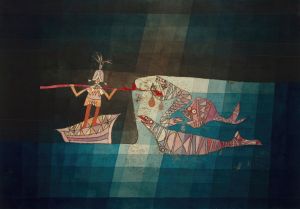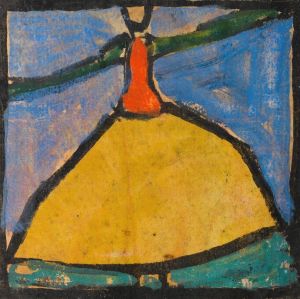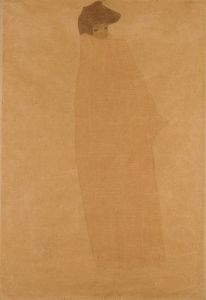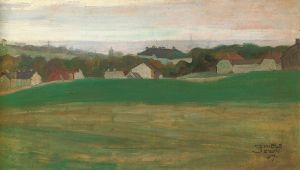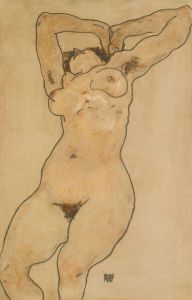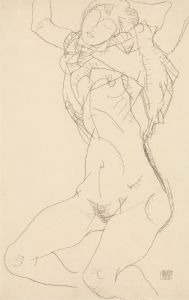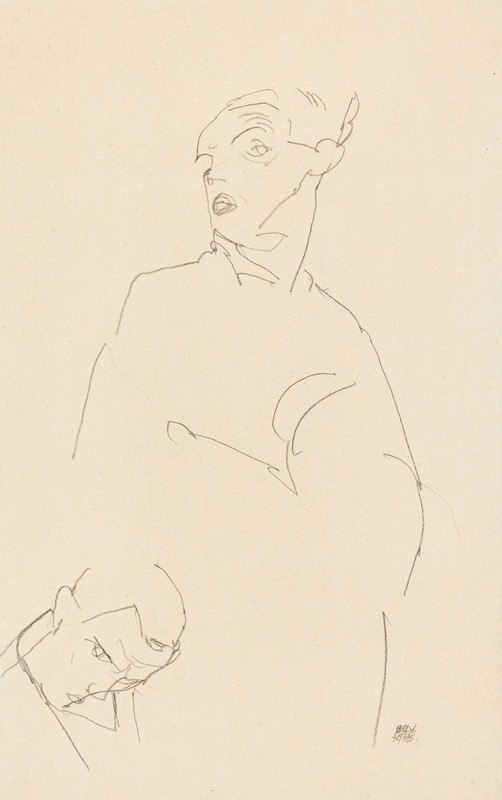
Selbstporträt
A hand-painted replica of Egon Schiele’s masterpiece Selbstporträt, meticulously crafted by professional artists to capture the true essence of the original. Each piece is created with museum-quality canvas and rare mineral pigments, carefully painted by experienced artists with delicate brushstrokes and rich, layered colors to perfectly recreate the texture of the original artwork. Unlike machine-printed reproductions, this hand-painted version brings the painting to life, infused with the artist’s emotions and skill in every stroke. Whether for personal collection or home decoration, it instantly elevates the artistic atmosphere of any space.
Egon Schiele, an Austrian painter known for his distinctive style and provocative subject matter, created several self-portraits throughout his career, reflecting his exploration of identity, emotion, and the human form. One of these works is "Selbstporträt" (Self-Portrait), which exemplifies Schiele's unique approach to portraiture and his contribution to early 20th-century art.
Born in 1890 in Tulln, Austria, Schiele was a leading figure of Austrian Expressionism. He studied at the Vienna Academy of Fine Arts but soon became dissatisfied with the conservative approach of the institution. Influenced by Gustav Klimt, Schiele developed a style characterized by bold lines, distorted figures, and a focus on psychological depth. His self-portraits are particularly notable for their raw emotional intensity and introspective quality.
"Selbstporträt" by Egon Schiele is a compelling example of his self-explorative work. In this piece, Schiele often depicted himself in a manner that challenges traditional notions of beauty and form. His self-portraits are marked by an unflinching honesty, often portraying himself in awkward or contorted poses, which convey a sense of vulnerability and existential inquiry. Schiele's use of line is particularly striking; he employs sharp, angular contours that emphasize the skeletal structure and create a sense of tension and dynamism.
The color palette in Schiele's self-portraits is typically muted, with earthy tones and stark contrasts that enhance the emotional impact of the work. He often used watercolor and gouache, which allowed for fluidity and spontaneity in his compositions. This technique contributes to the immediacy and expressiveness of his self-portraits, capturing fleeting emotions and the transient nature of human experience.
Schiele's self-portraits are not merely representations of his physical appearance; they are deeply introspective works that delve into themes of identity, isolation, and mortality. Through his art, Schiele confronted his own fears and desires, using his image as a canvas for exploring the complexities of the human psyche. This introspection is a hallmark of his work and a key reason why his self-portraits continue to resonate with audiences today.
Throughout his career, Schiele faced controversy due to the provocative nature of his work, which often included erotic and taboo subjects. Despite this, he gained recognition and support from influential figures in the art world, including Klimt. Schiele's career was tragically cut short when he died of the Spanish flu in 1918 at the age of 28. However, his impact on the art world endures, and his self-portraits remain a testament to his innovative spirit and profound understanding of human emotion.
In summary, Egon Schiele's "Selbstporträt" is a powerful example of his ability to capture the essence of the human condition through art. His self-portraits are not only a reflection of his own life and experiences but also a broader commentary on the nature of existence. Schiele's work continues to be celebrated for its emotional depth, technical skill, and enduring influence on modern art.






